Abstract
Six experiments were used to examine the effects of explicit response, stimulus, and temporal dependencies on responding in an interfood interval. The first two experiments demonstrated that 10-segment 60-s interfood clocks controlled similar distributions of key pecking in pigeons regardless of whether response–reinforcement contiguity was required, allowed, or precluded. The third and fourth experiments found that in the absence of an explicit response–reinforcement dependency, systematic explicit stimuli in an interfood interval were sufficient to establish and maintain the characteristic distribution of key pecking and that an interval without an explicit clock failed to establish or maintain key pecking. The last two experiments demonstrated that the interfood interval need not be of fixed length, and that a simple correlation of stimuli with increments from either a minimum to a maximum imminency or probability of food presentation controlled behavior in a similar manner. Successively higher rates generally occurred to successively later stimuli in the upper half of the range.
Keywords: response dependency, stimulus dependency, temporal dependency, clock stimuli, serial compound, sign tracking, autoshaping, key peck, pigeons
Full text
PDF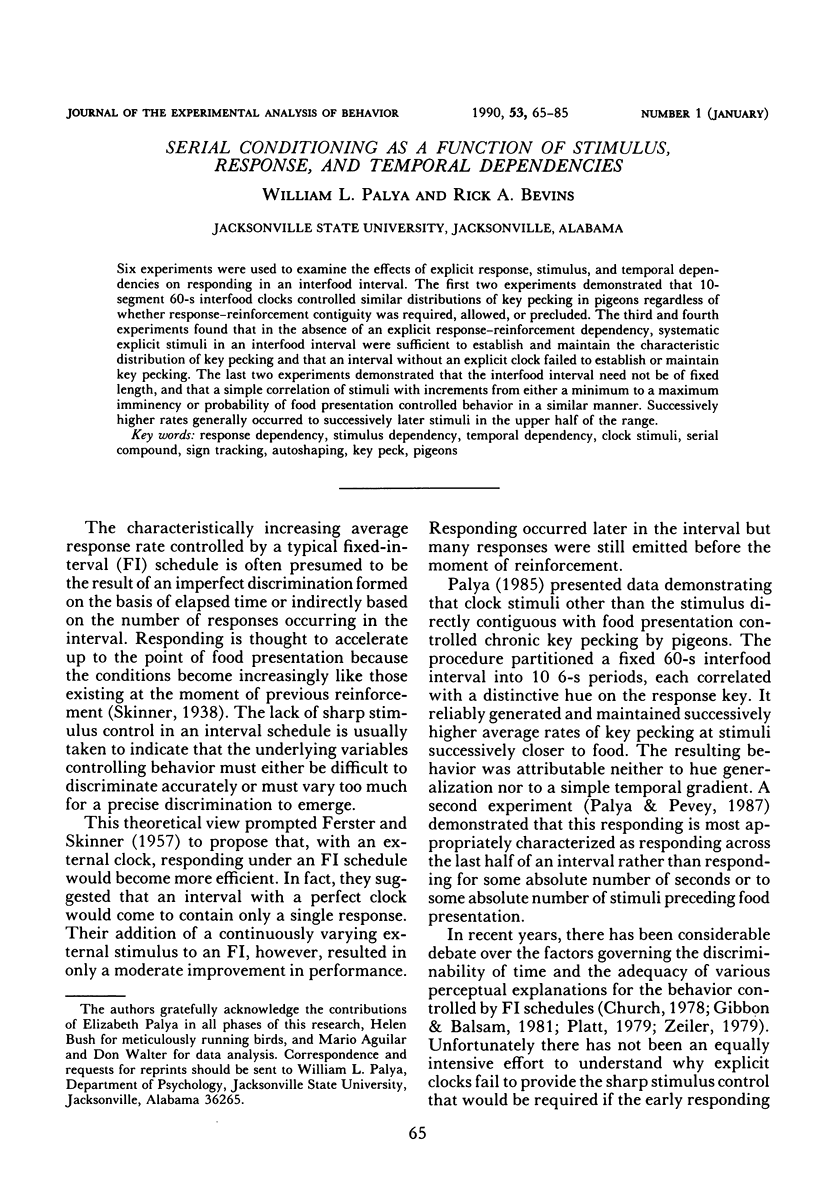
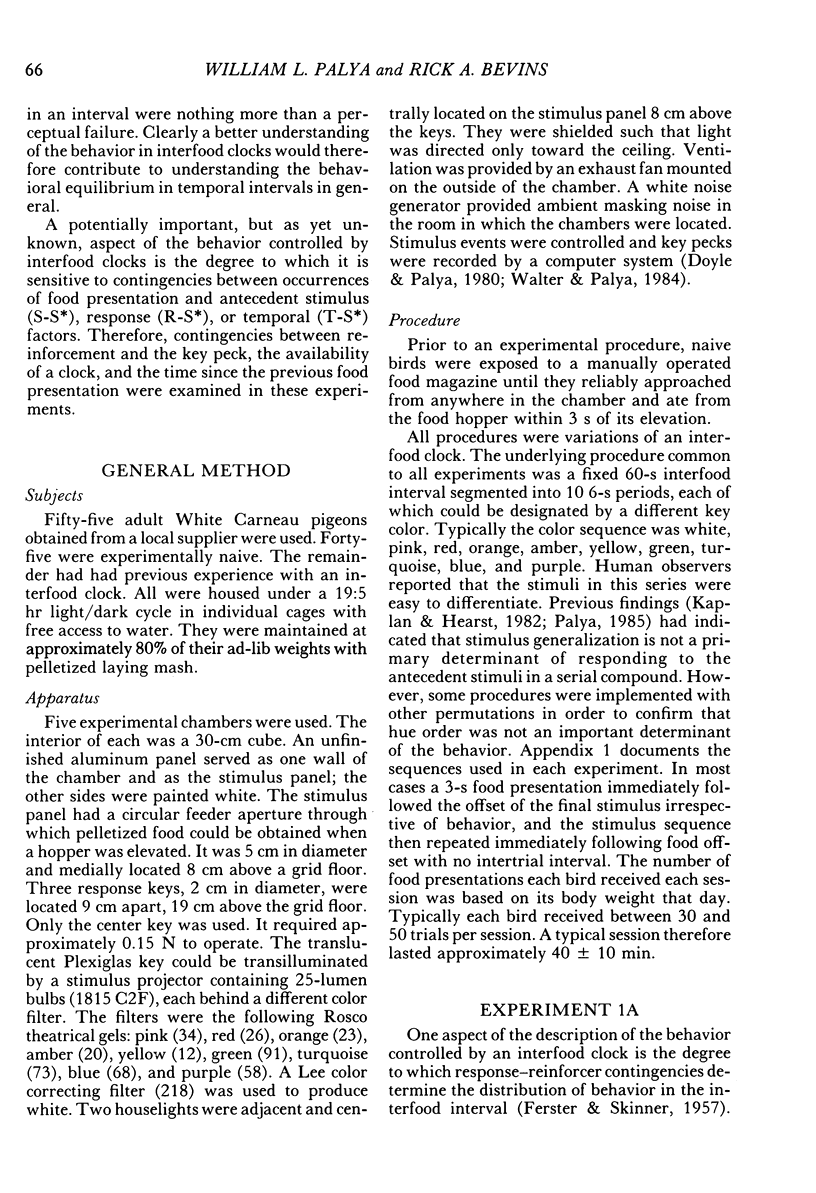
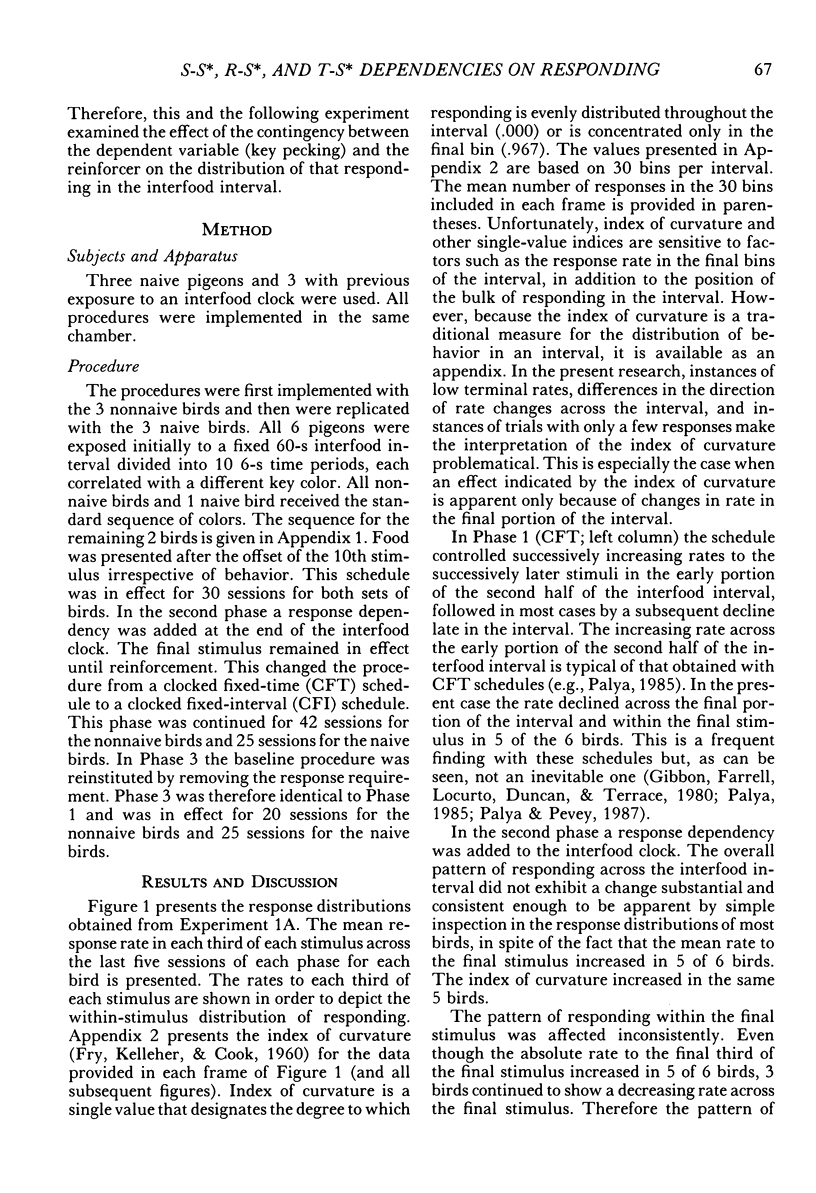
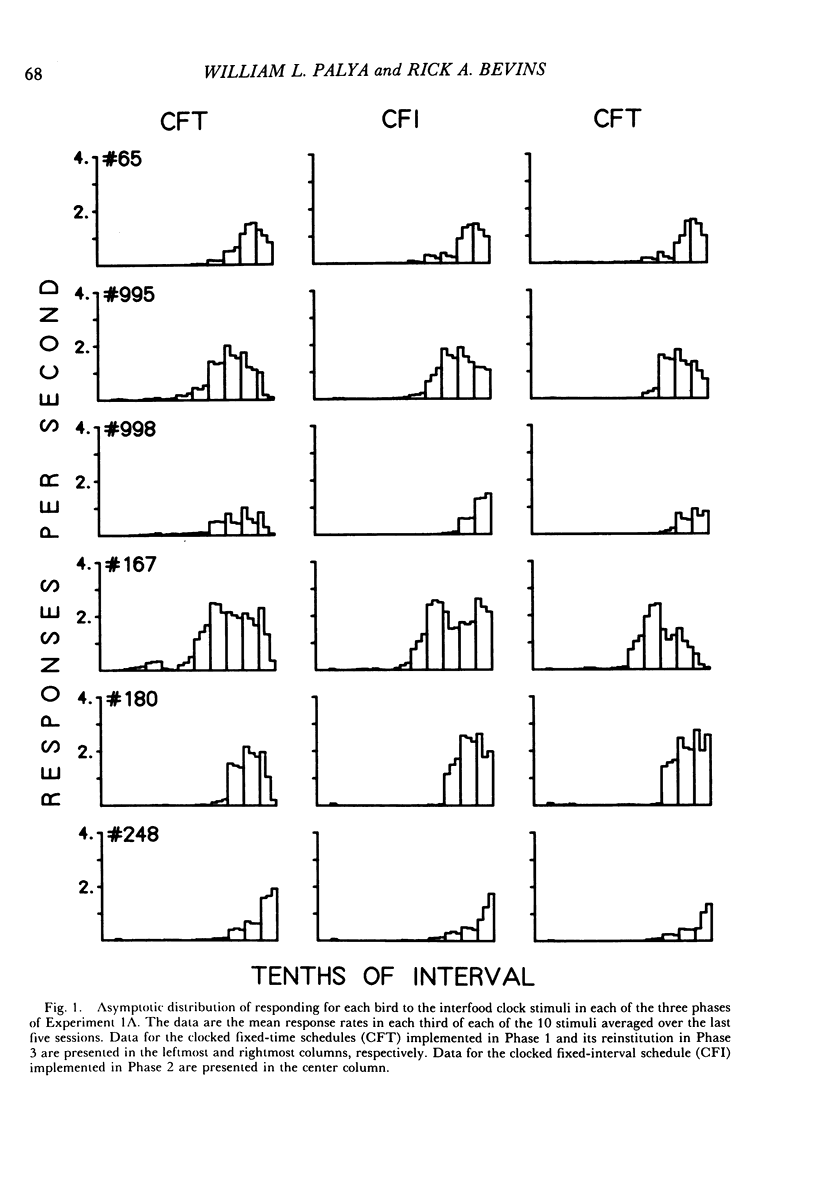
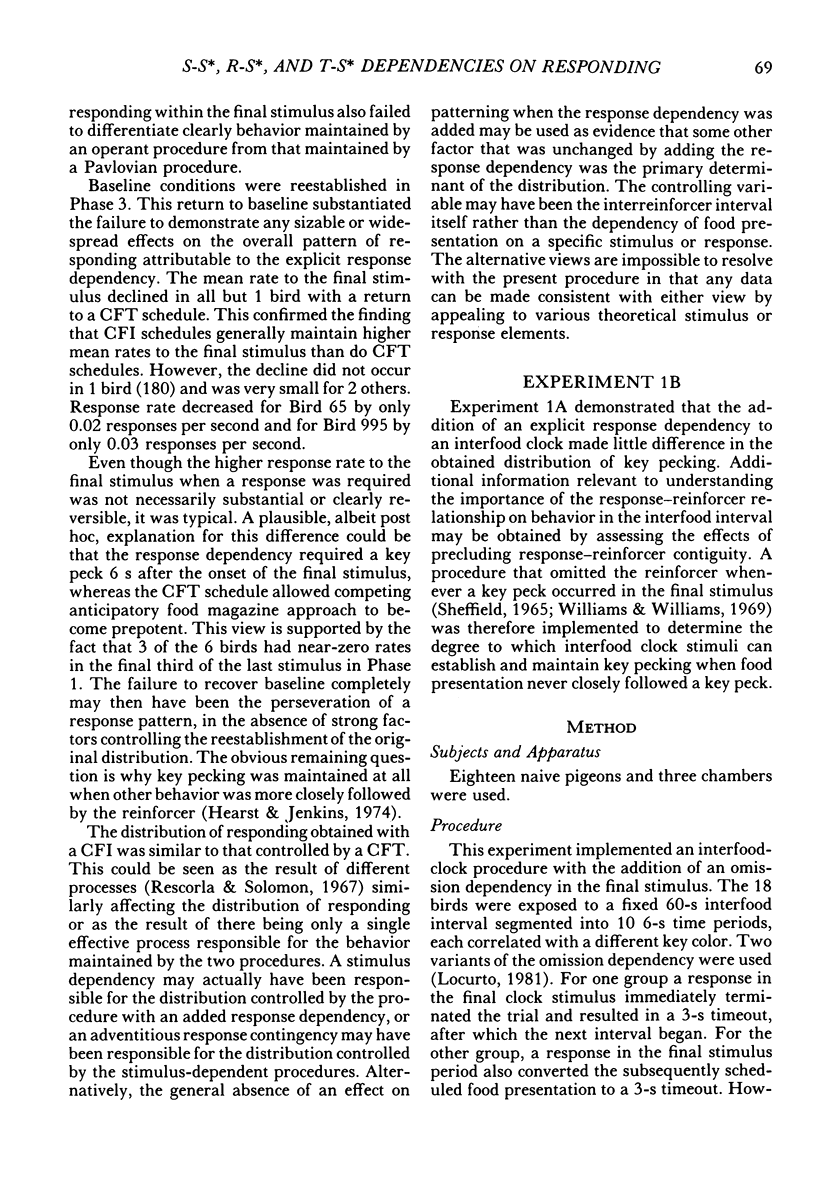
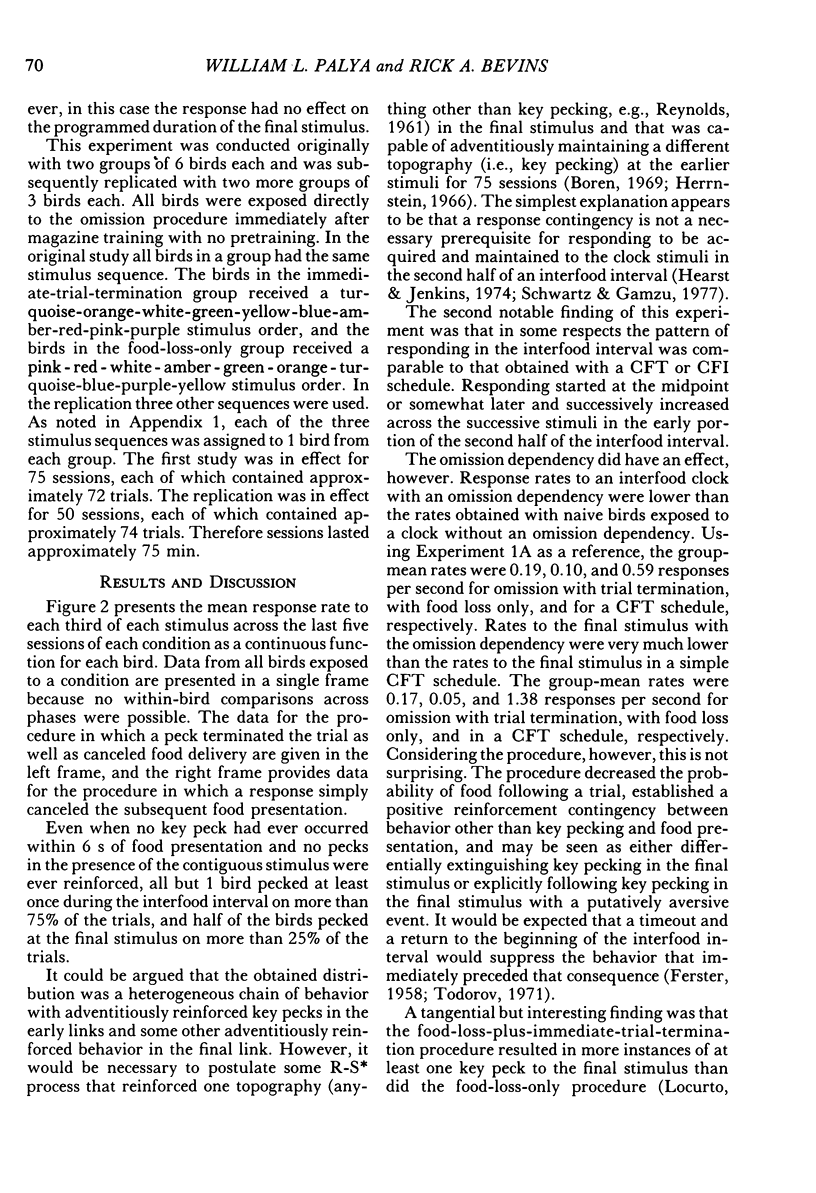
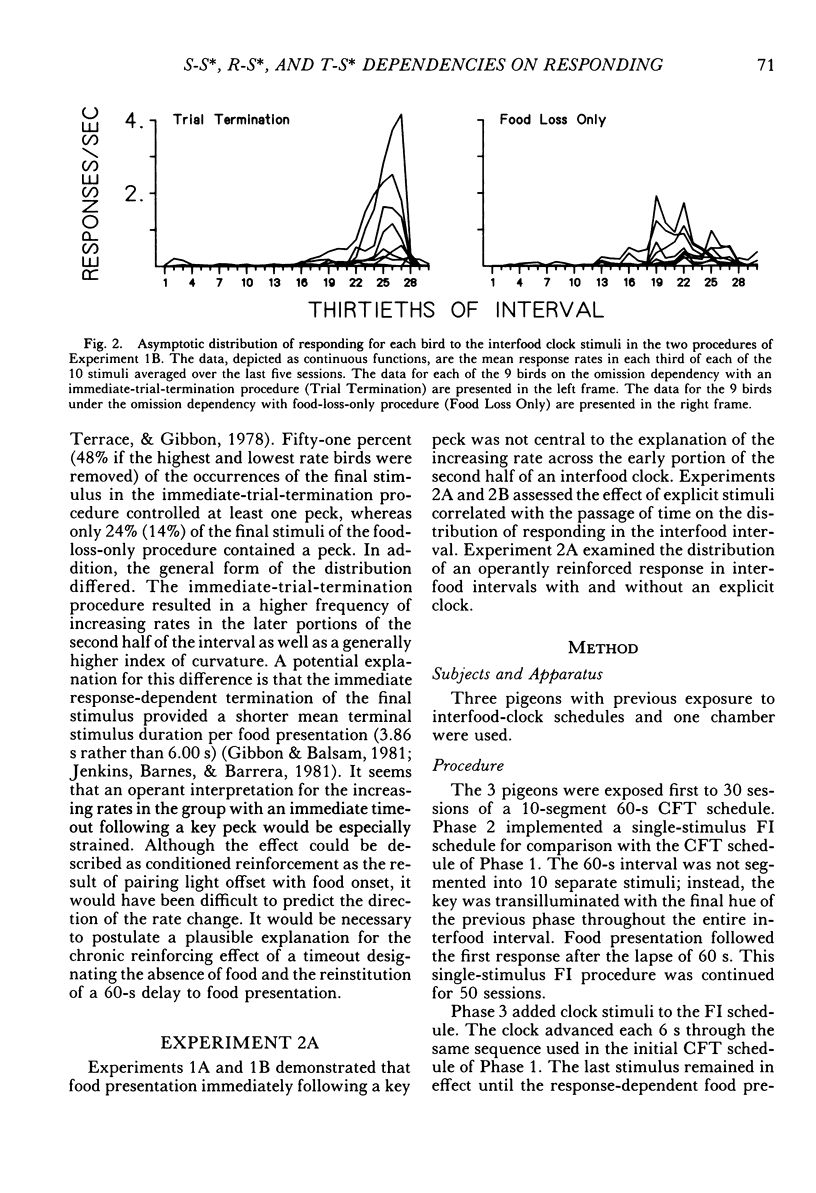
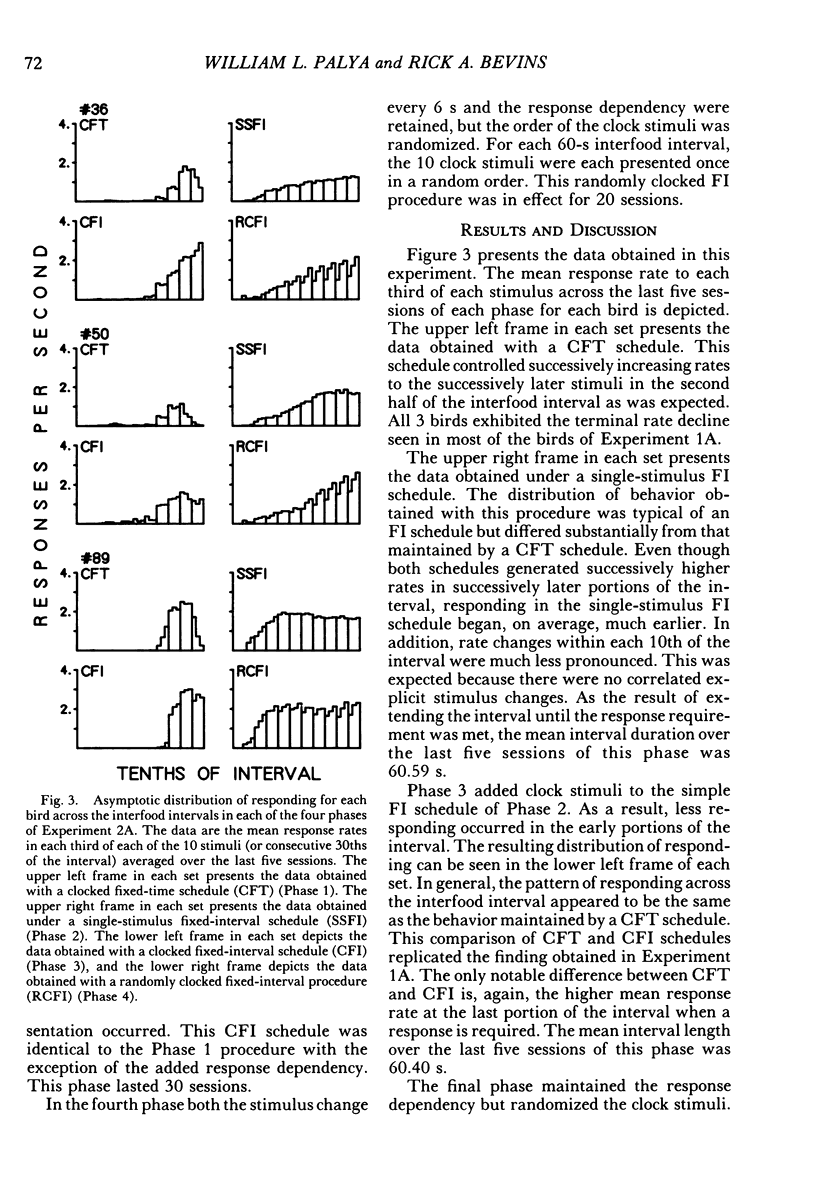
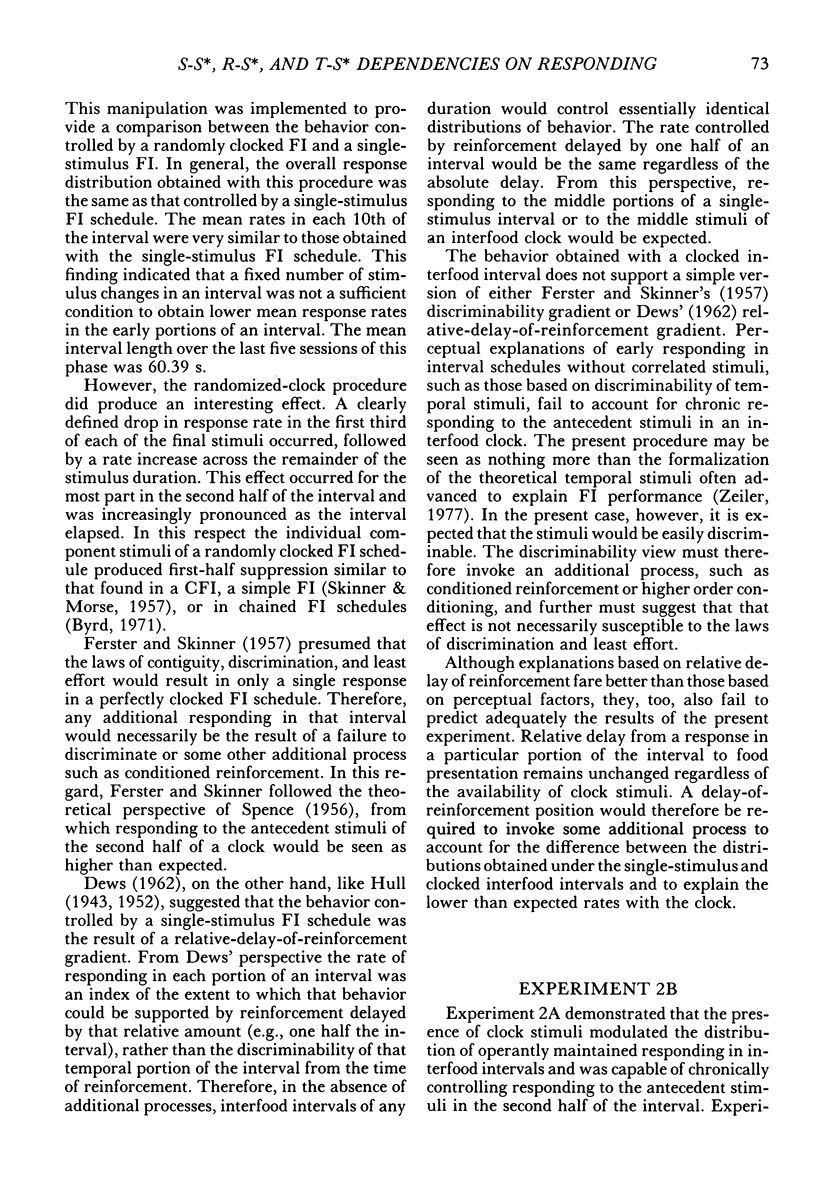
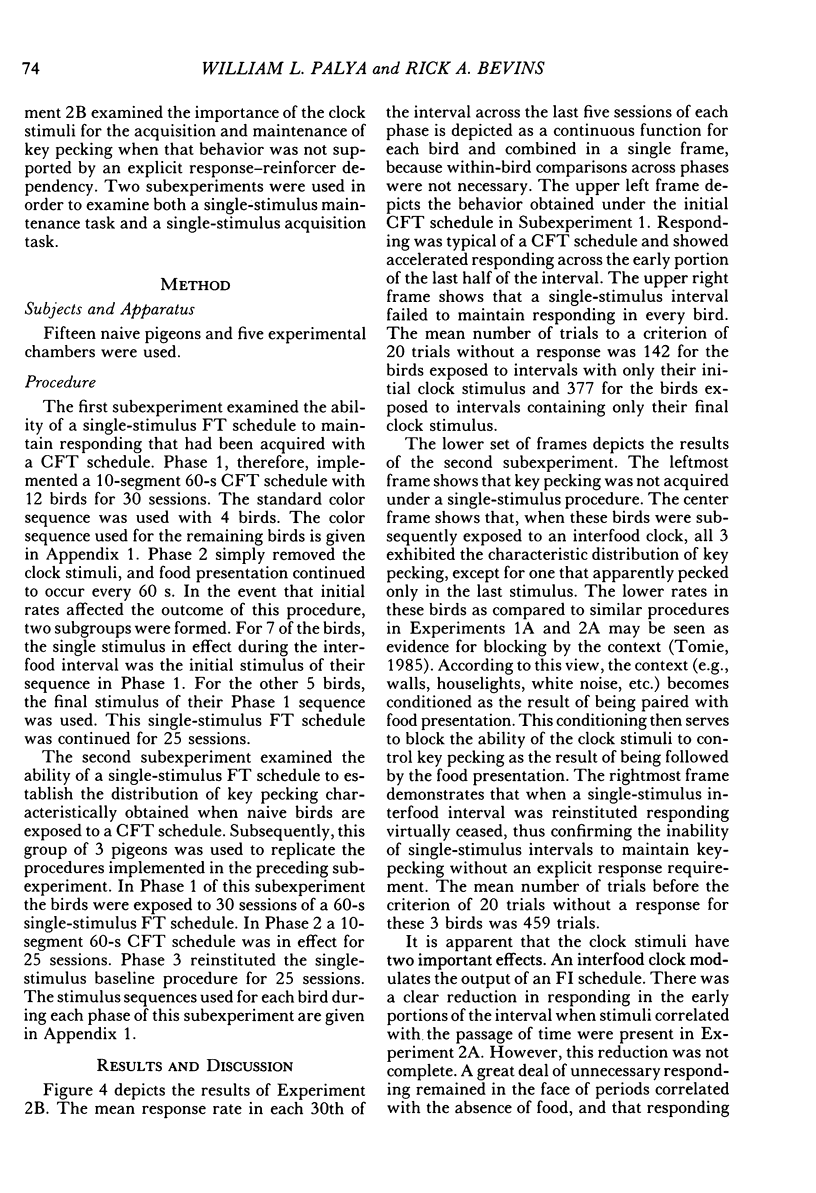
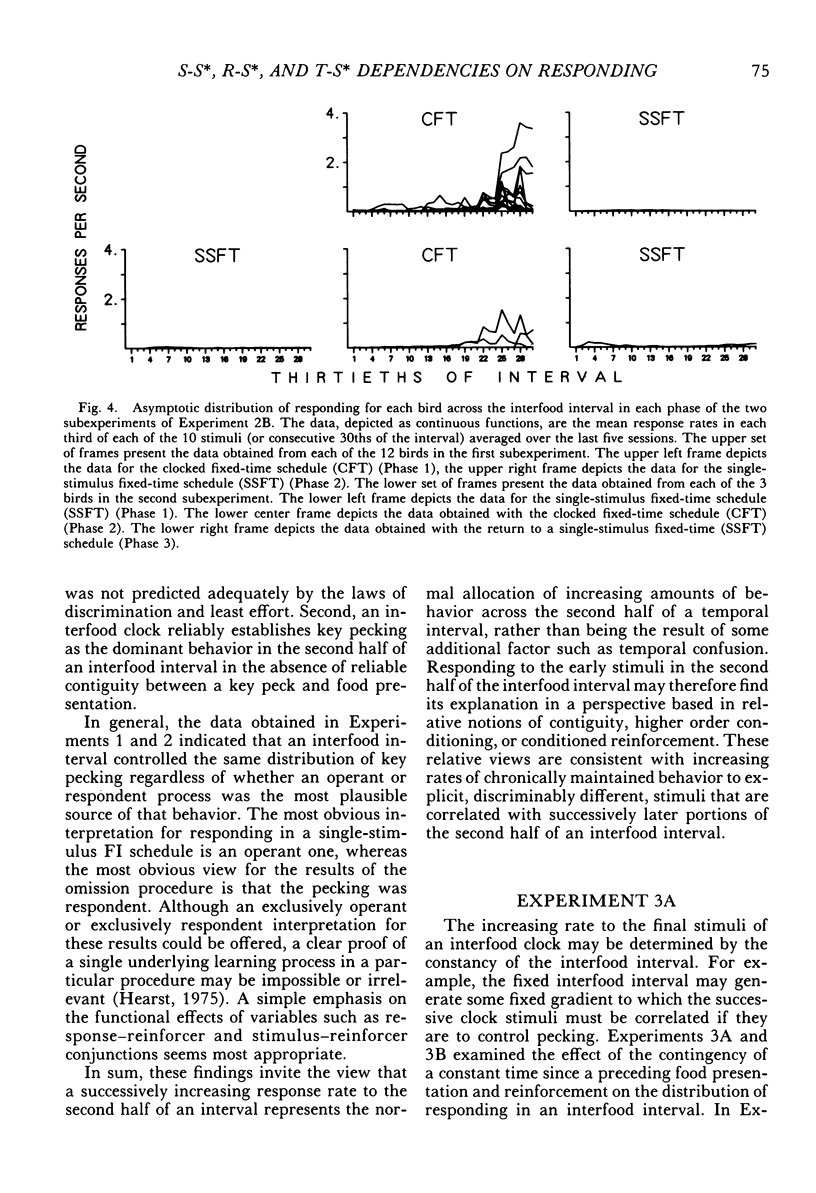
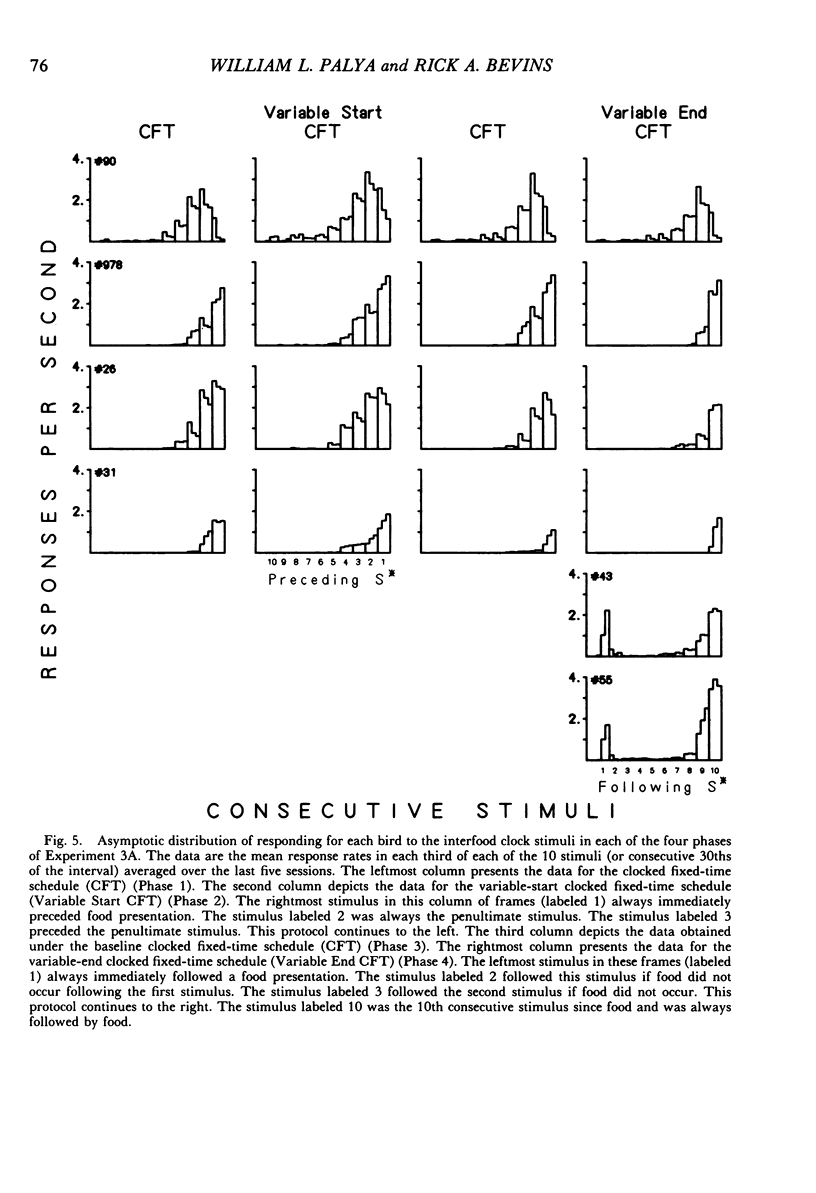
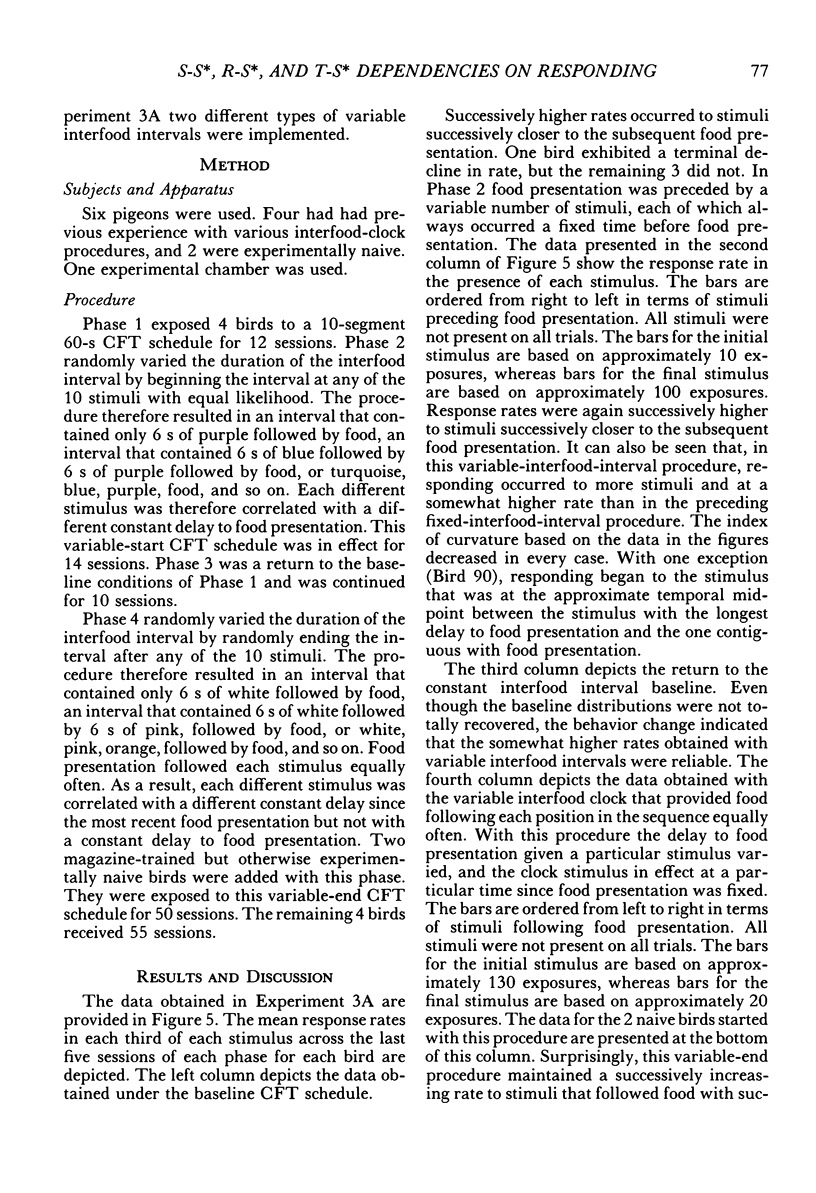
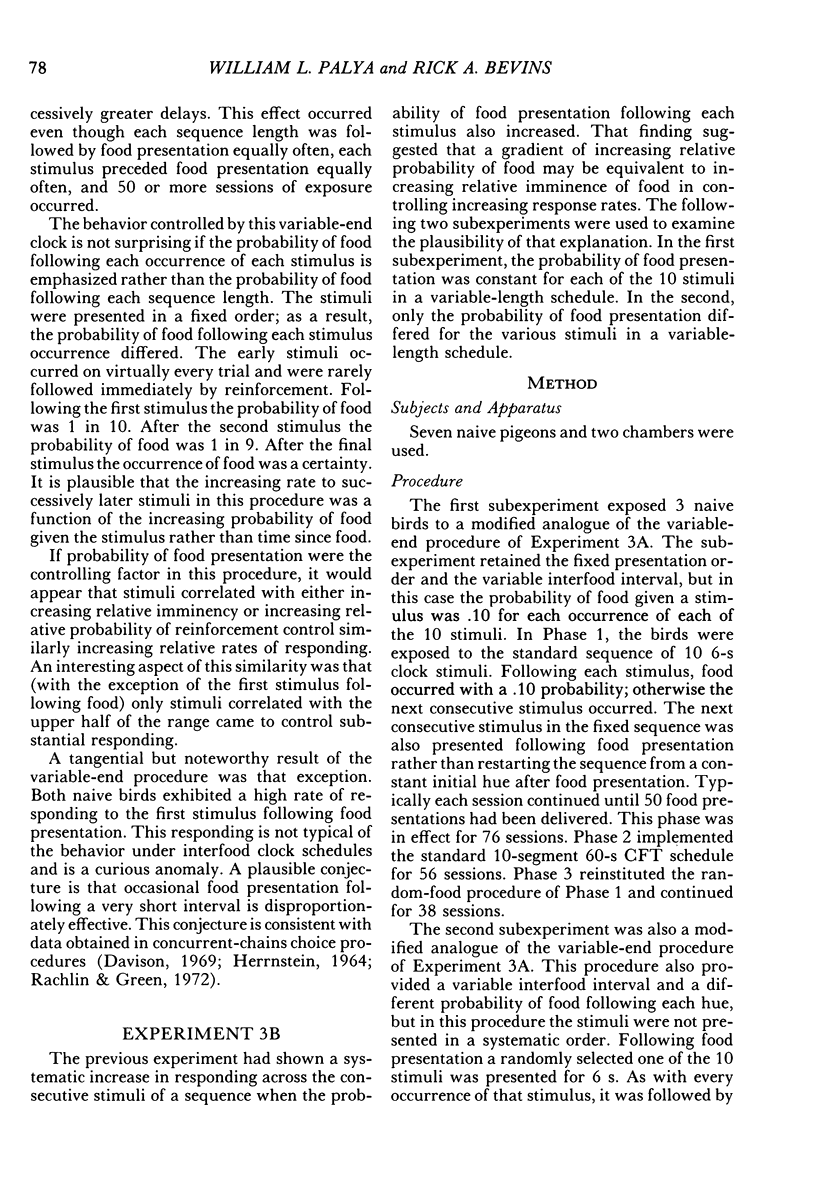
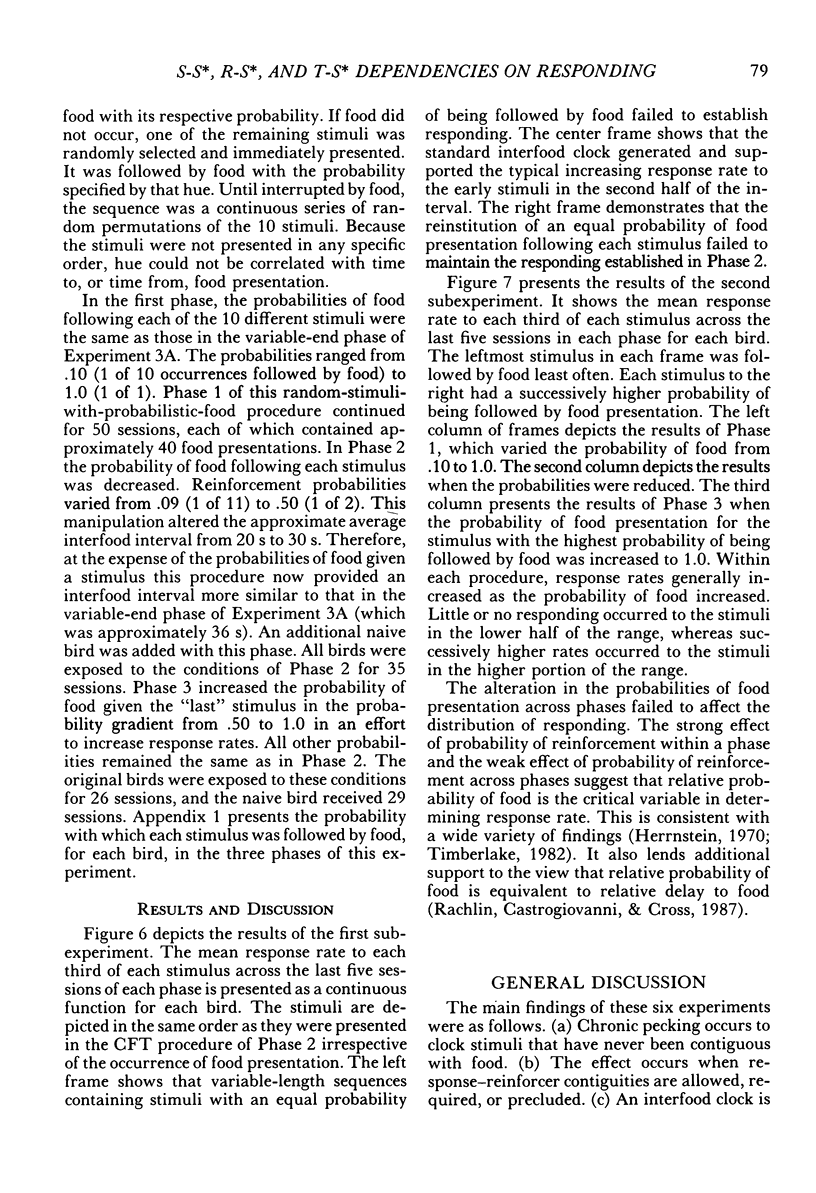
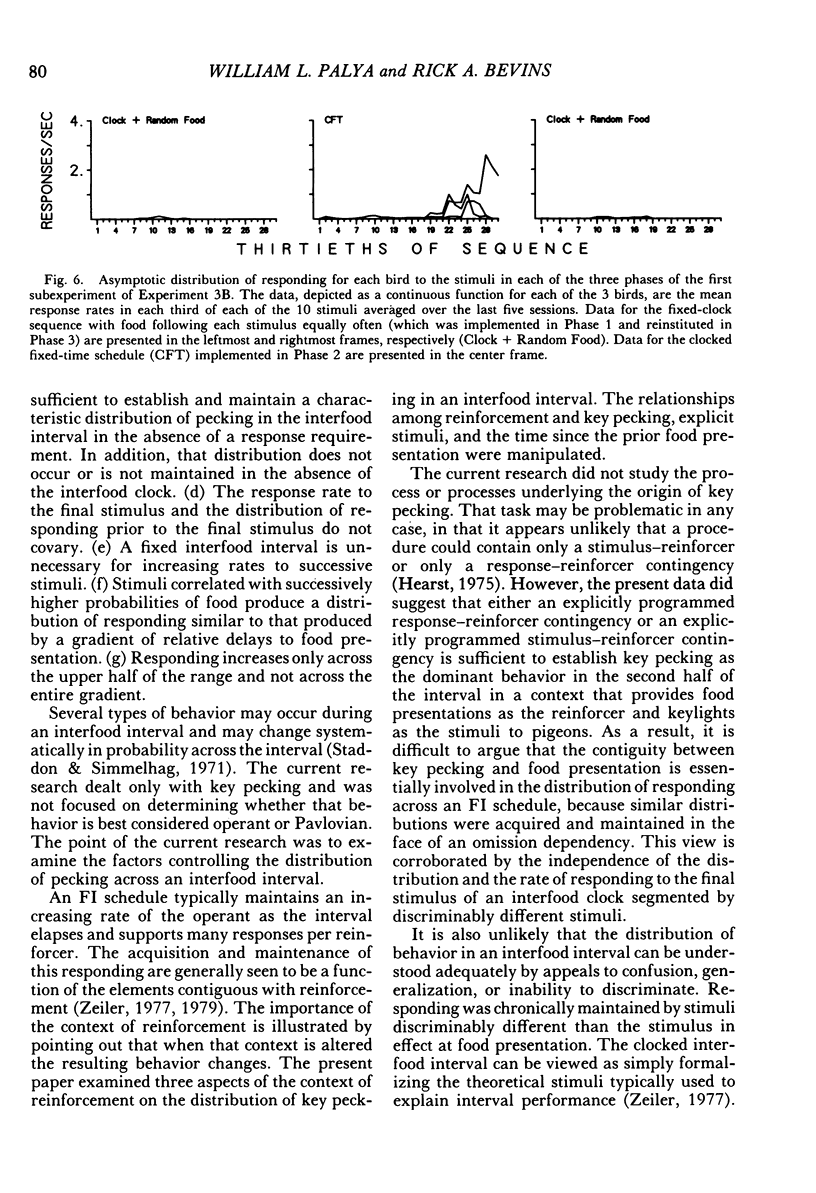
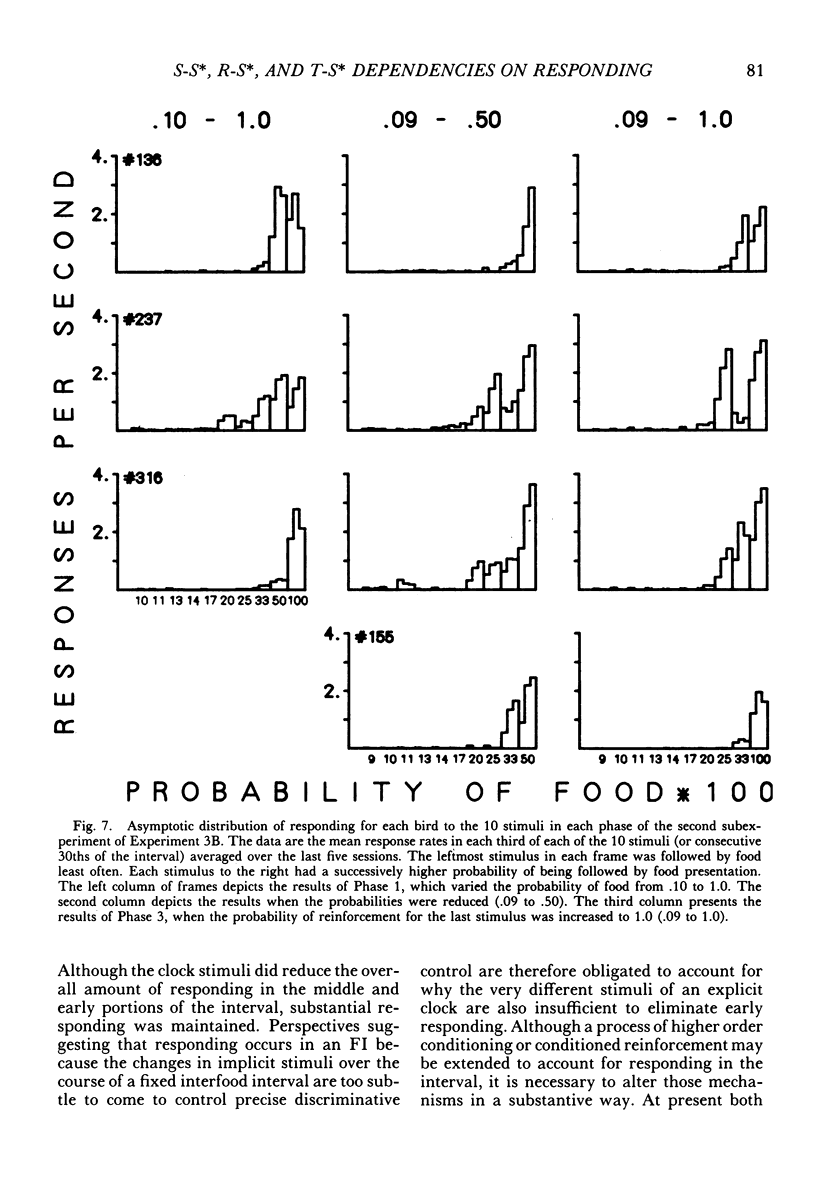
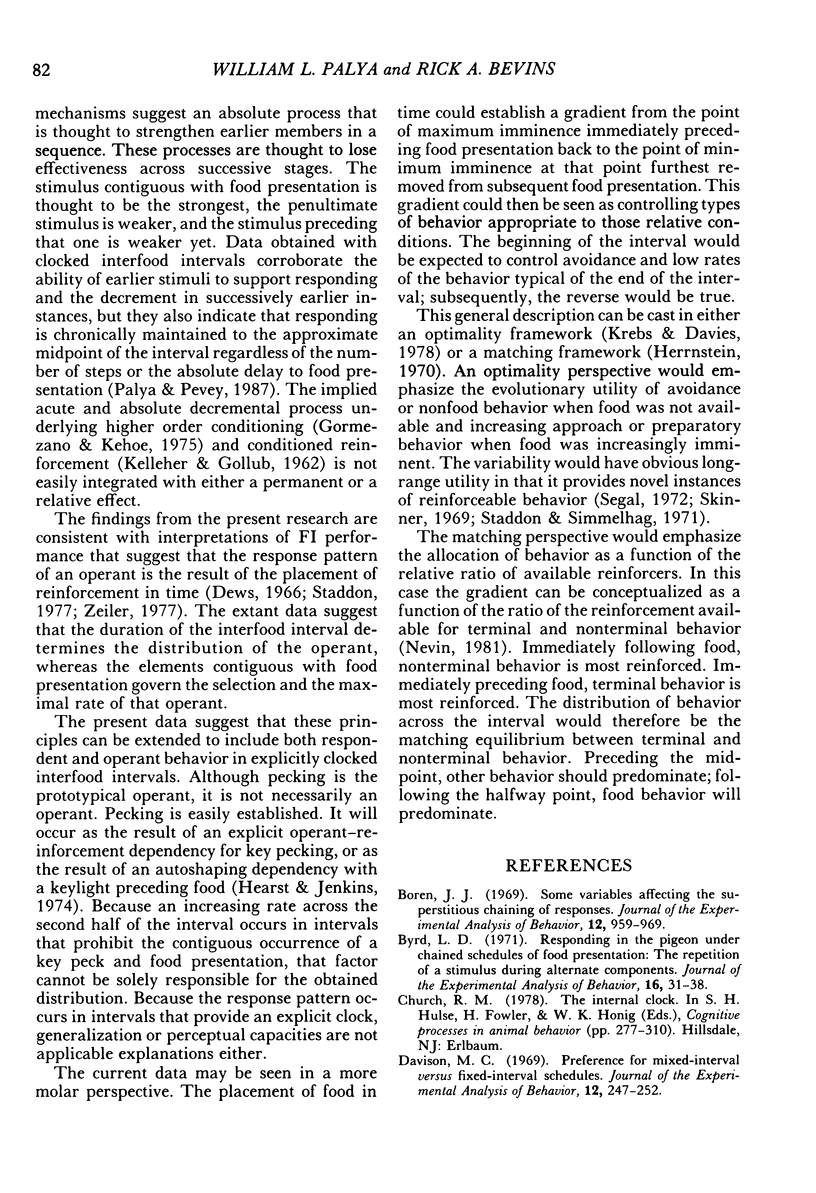
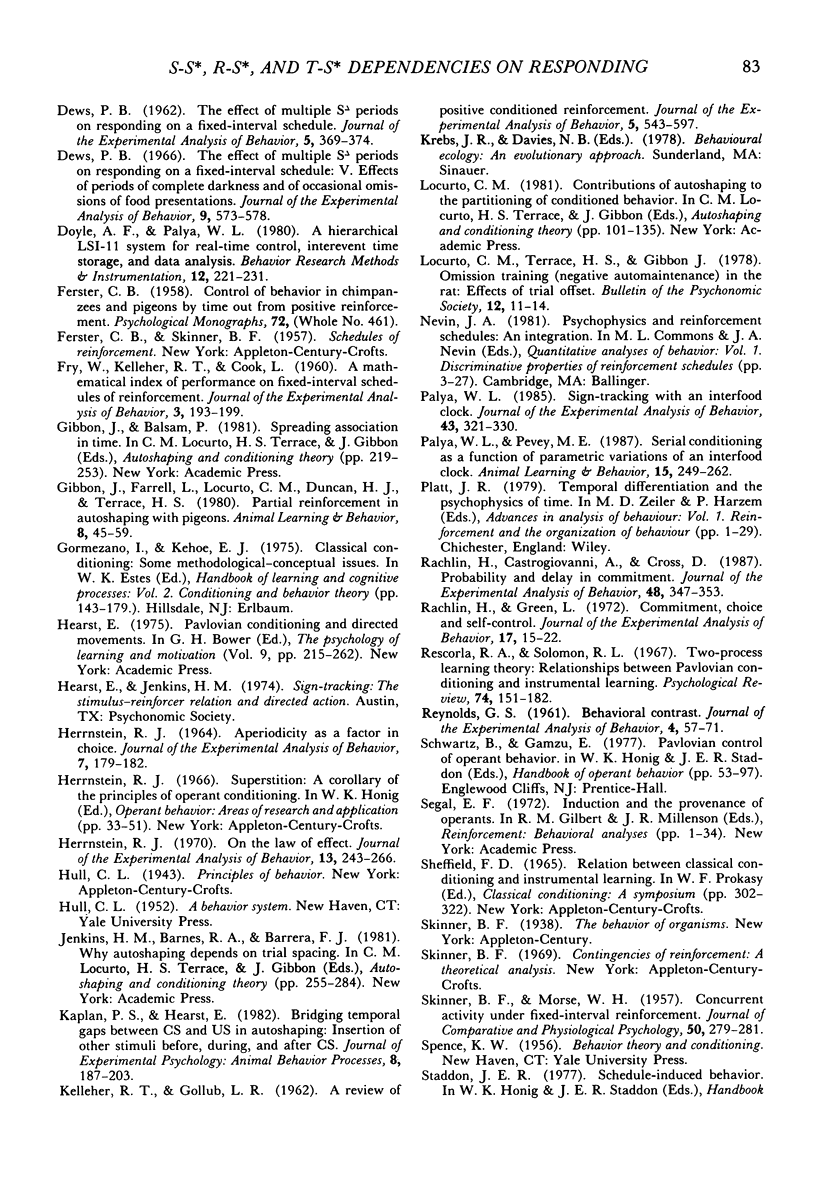
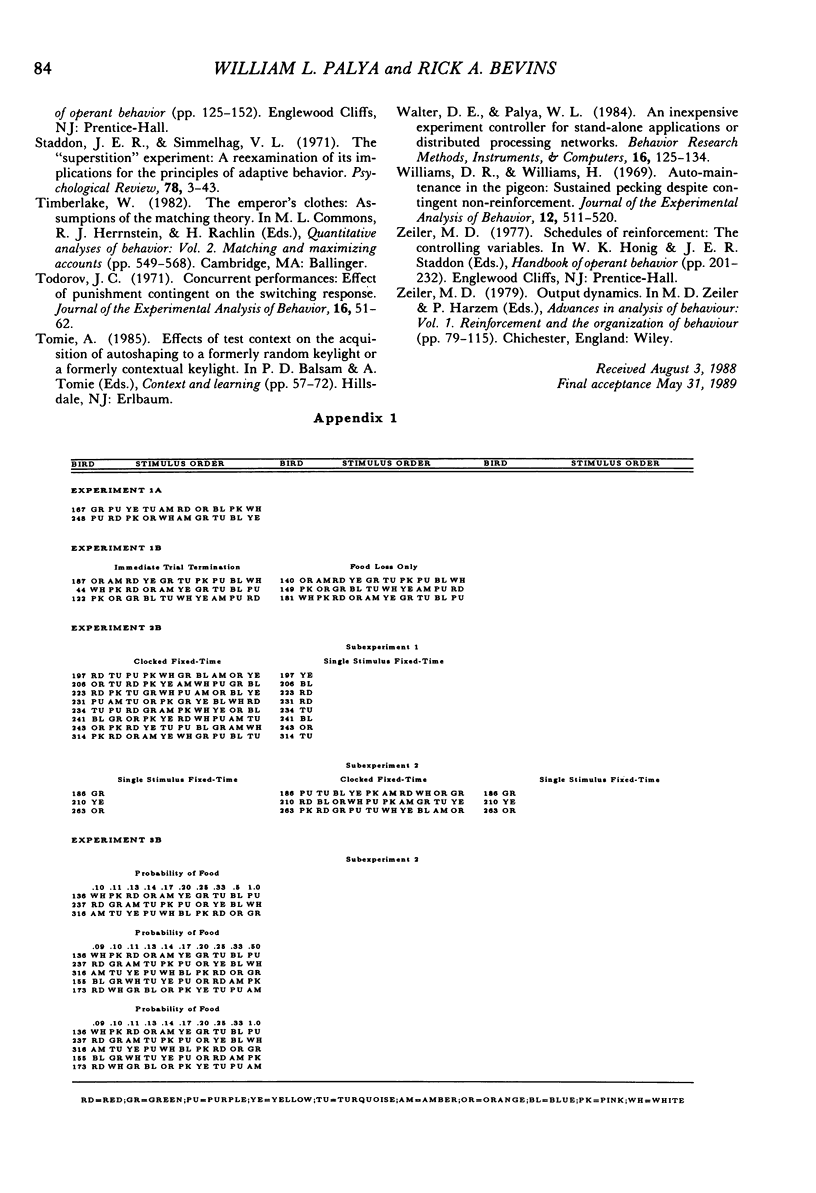
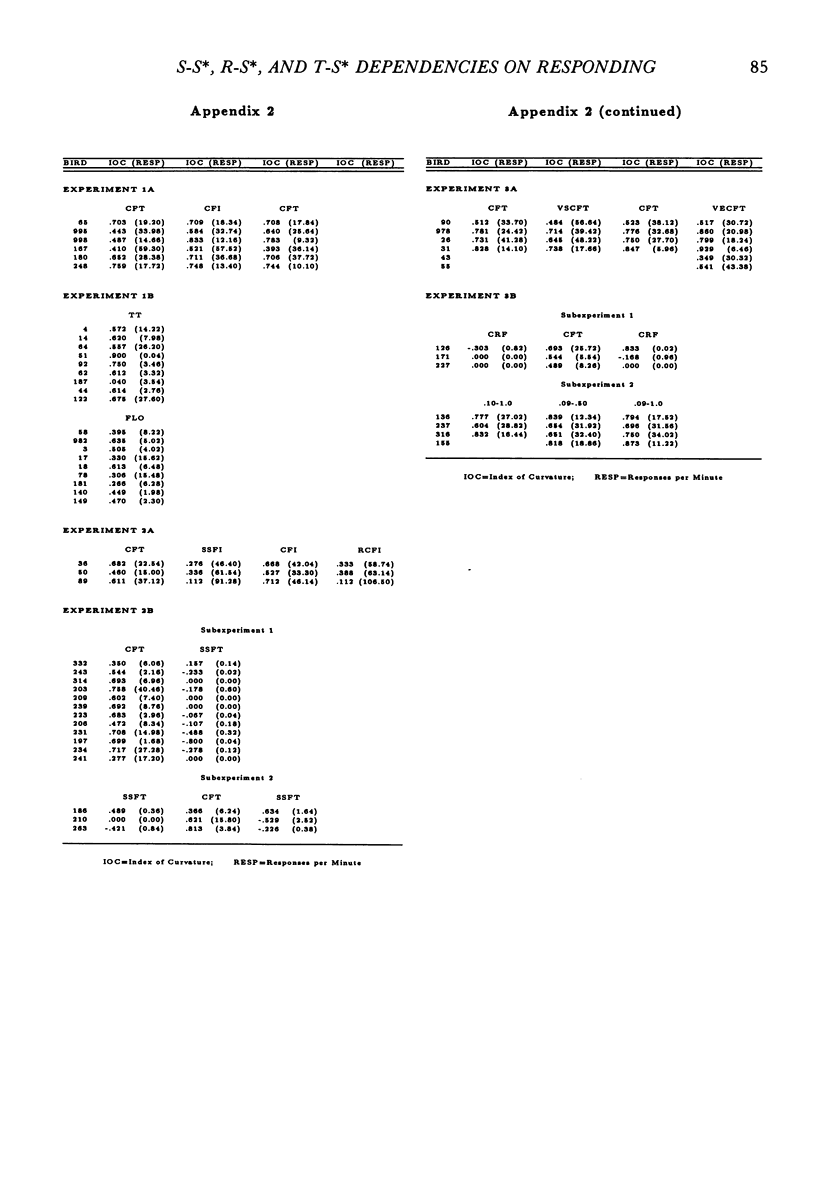
Selected References
These references are in PubMed. This may not be the complete list of references from this article.
- Boren J. J. Some variables affecting the superstitious chaining of responses. J Exp Anal Behav. 1969 Nov;12(6):959–969. doi: 10.1901/jeab.1969.12-959. [DOI] [PMC free article] [PubMed] [Google Scholar]
- Byrd L. D. Responding in the pigeon under chained schedules of food presentation: the repetition of a stimulus during alternate components. J Exp Anal Behav. 1971 Jul;16(1):31–38. doi: 10.1901/jeab.1971.16-31. [DOI] [PMC free article] [PubMed] [Google Scholar]
- DEWS P. B. The effect of multiple S delta periods on responding on a fixed-interval schedule. J Exp Anal Behav. 1962 Jul;5:369–374. doi: 10.1901/jeab.1962.5-369. [DOI] [PMC free article] [PubMed] [Google Scholar]
- Davison M. C. Preference for mixed-interval versus fixed-interval schedules. J Exp Anal Behav. 1969 Mar;12(2):247–252. doi: 10.1901/jeab.1969.12-247. [DOI] [PMC free article] [PubMed] [Google Scholar]
- Dews P. B. The effect of multiple S-delta periods on responding on a fixed-interval schedule. V. Effect of periods of complete darkness and of occasional omissions of food presentations. J Exp Anal Behav. 1966 Sep;9(5):573–578. doi: 10.1901/jeab.1966.9-573. [DOI] [PMC free article] [PubMed] [Google Scholar]
- FRY W., KELLEHER R. T., COOK L. A mathematical index of performance on fixed-interval schedules of reinforcement. J Exp Anal Behav. 1960 Jul;3:193–199. doi: 10.1901/jeab.1960.3-193. [DOI] [PMC free article] [PubMed] [Google Scholar]
- HERRNSTEIN R. J. APERIODICITY AS A FACTOR IN CHOICE. J Exp Anal Behav. 1964 Mar;7:179–182. doi: 10.1901/jeab.1964.7-179. [DOI] [PMC free article] [PubMed] [Google Scholar]
- Herrnstein R. J. On the law of effect. J Exp Anal Behav. 1970 Mar;13(2):243–266. doi: 10.1901/jeab.1970.13-243. [DOI] [PMC free article] [PubMed] [Google Scholar]
- KELLEHER R. T., GOLLUB L. R. A review of positive conditioned reinforcement. J Exp Anal Behav. 1962 Oct;5:543–597. doi: 10.1901/jeab.1962.5-s543. [DOI] [PMC free article] [PubMed] [Google Scholar]
- Kaplan P. S., Hearst E. Bridging temporal gaps between CS and US in autoshaping: insertion of other stimuli before, during, and after CS. J Exp Psychol Anim Behav Process. 1982 Apr;8(2):187–203. [PubMed] [Google Scholar]
- Palya W. L. Sign-tracking with an interfood clock. J Exp Anal Behav. 1985 May;43(3):321–330. doi: 10.1901/jeab.1985.43-321. [DOI] [PMC free article] [PubMed] [Google Scholar]
- REYNOLDS G. S. Behavioral contrast. J Exp Anal Behav. 1961 Jan;4:57–71. doi: 10.1901/jeab.1961.4-57. [DOI] [PMC free article] [PubMed] [Google Scholar]
- Rachlin H., Castrogiovanni A., Cross D. Probability and delay in commitment. J Exp Anal Behav. 1987 Nov;48(3):347–353. doi: 10.1901/jeab.1987.48-347. [DOI] [PMC free article] [PubMed] [Google Scholar]
- Rachlin H., Green L. Commitment, choice and self-control. J Exp Anal Behav. 1972 Jan;17(1):15–22. doi: 10.1901/jeab.1972.17-15. [DOI] [PMC free article] [PubMed] [Google Scholar]
- Rescorla R. A., Solomon R. L. Two-process learning theory: Relationships between Pavlovian conditioning and instrumental learning. Psychol Rev. 1967 May;74(3):151–182. doi: 10.1037/h0024475. [DOI] [PubMed] [Google Scholar]
- SKINNER B. F., MORSE W. H. Concurrent activity under fixed-interval reinforcement. J Comp Physiol Psychol. 1957 Jun;50(3):279–281. doi: 10.1037/h0047021. [DOI] [PubMed] [Google Scholar]
- Todorov J. C. Concurrent performances: effect of punishment contingent on the switching response. J Exp Anal Behav. 1971 Jul;16(1):51–62. doi: 10.1901/jeab.1971.16-51. [DOI] [PMC free article] [PubMed] [Google Scholar]
- Williams D. R., Williams H. Auto-maintenance in the pigeon: sustained pecking despite contingent non-reinforcement. J Exp Anal Behav. 1969 Jul;12(4):511–520. doi: 10.1901/jeab.1969.12-511. [DOI] [PMC free article] [PubMed] [Google Scholar]


